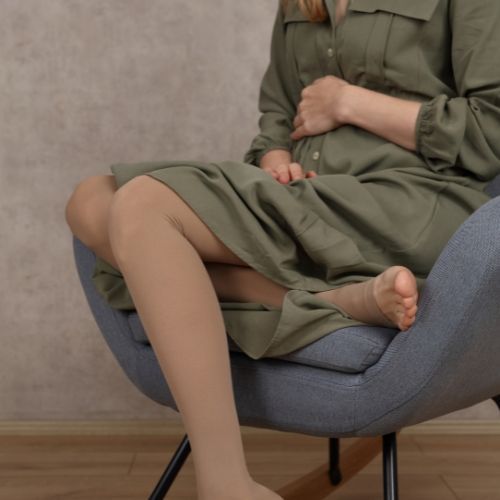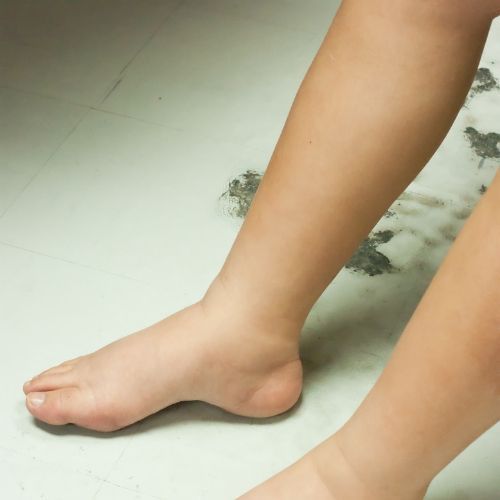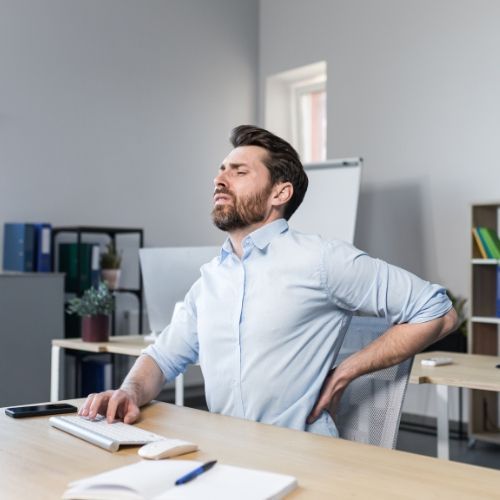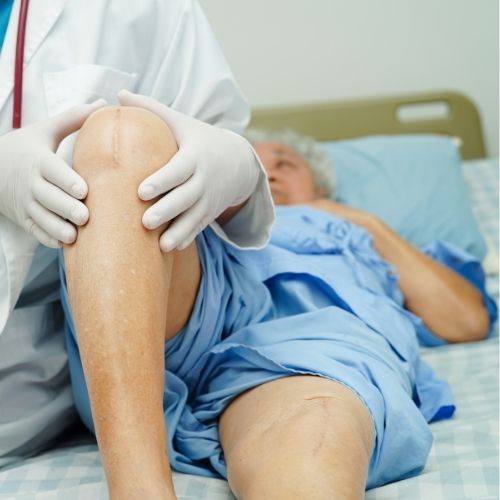When it comes to improving circulation and managing various health conditions, many people rely on compression stockings. Understanding how these stockings work and the benefits they offer can help individuals make informed decisions about their health. In this blog, you'll learn what compression stockings are, how they work, their benefits, and their uses, along with other helpful information.
What Are Compression Stockings?
They are also known as compression hosiery or socks.
Compression stockings are specialised socks designed to apply gentle pressure to the legs, helping to improve blood circulation. These stockings are commonly worn by individuals dealing with conditions such as varicose veins, edema, or
deep vein thrombosis (DVT). Compression stockings come in various styles, lengths, and compression levels to meet the specific needs of the user.
Compression stockings work by applying graduated pressure to the legs. The pressure is strongest at the ankle and gradually decreases as the stocking moves up the leg. This design helps push blood upward toward the heart, preventing it from pooling in the lower extremities.
Types of Compression Stockings
Here are the 6 common types of compression stockings:
Choosing the right type of compression stocking depends on the severity of the condition being treated and personal preferences.
How Do Compression Stockings Work?
Compression Socks work through a simple yet effective mechanism—by applying external pressure to the legs. The main goal is to support the veins and improve circulation, especially for people who spend long periods of time sitting or standing. Here's a breakdown of how they work:
- Increased Venous Return: The compression helps facilitate blood flow back toward the heart. By reducing the diameter of veins, compression stockings increase the pressure on the veins, pushing blood upward and preventing it from pooling.
- Decreased Swelling: For individuals with edema or swollen legs, compression stockings reduce swelling by promoting better fluid distribution and preventing it from accumulating in the lower extremities.
- Prevention of Blood Clots: Compression stockings can reduce the risk of blood clots, particularly in individuals who are immobile for extended periods, such as those recovering from surgery or long-haul travellers.
Compression hosiery uses a combination of graduated pressure and external support to promote better circulation and reduce the risk of complications related to poor venous return.
Who Can Benefit from Compression Stockings?
They are helpful for a wide range of individuals. Here are the 7 primary groups who benefit the most:
By providing support to the veins and improving blood flow, compression stockings can help manage these conditions and improve overall leg health.
How to Use Compression Stockings Effectively?
Using compression stockings effectively requires a few simple steps. Here’s how you can ensure you get the most benefit from them:
- Choose the Right Size: Make sure the stockings fit properly. Too tight, and they won’t be comfortable or effective; too loose, and they won’t provide the necessary pressure. Measure your legs according to the manufacturer’s guidelines to find the correct size.
- Wear Them Daily: For best results, wear your compression stockings every day. Put them on in the morning before swelling has a chance to build up and remove them before bedtime.
- Put Them On Correctly: Make sure the stockings are smooth and free from wrinkles. Gently roll the stockings up the legs, making sure there’s no bunching, which can cause discomfort.
- Maintain Proper Hygiene: Compression stockings should be washed regularly to maintain their elasticity and effectiveness. Follow the manufacturer’s care instructions to ensure their longevity.
You can maximise the benefits of your compression stockings and enjoy better circulation and comfort by following the above recommendations.
Common Myths and Facts About Compression Stockings
Compression stockings are often surrounded by misconceptions. Let's clear up some of the most common myths:
1. Compression Stockings Are Only for Older Adults
People of all ages can benefit from compression stockings, not just older adults. Individuals who stand or sit for long periods can also experience leg swelling and discomfort.
2. They Are Uncomfortable
While compression stockings apply pressure, they are designed for comfort. Many people find them helpful in alleviating pain and discomfort from poor circulation.
3. You Only Need Them When You Have Varicose Veins
Compression stockings can help with a variety of conditions, including edema, DVT prevention, and recovery after surgery. They are not just for varicose veins.
When to Consult a Healthcare Provider?
While compression stockings are generally safe, it’s essential to consult a healthcare provider in certain situations:
- If you have severe circulation issues or conditions such as arterial disease.
- If you experience pain, numbness, or discomfort while wearing compression stockings.
- If you have open wounds or skin conditions on your legs that may be aggravated by compression.
Your healthcare provider can recommend the best type and compression level for your specific condition, ensuring you get the most benefit from the stockings.
FAQ on Compression Stockings
1. How do you put on compression stockings?
To put on compression stockings, start by turning them inside out until you reach the heel. Slip your foot into the stocking, then carefully pull it up over your ankle and calf. Ensure the stockings are smooth, without any wrinkles, for maximum comfort and effectiveness.
2. How to put on compression stockings without damaging them?
To avoid damaging compression stockings, be gentle when putting them on. Use a stocking aid or gloves to protect the fabric. Roll the stocking down to your ankle, slide it on slowly, and then gradually pull it up, making sure it’s not twisted and fits snugly without wrinkles.
3. How long should I wear compression stockings after abdominal surgery?
After abdominal surgery, compression stockings are usually worn for several weeks to prevent blood clots and promote healing. The exact duration depends on your doctor’s recommendation, but it’s typically between 2 to 6 weeks. Always follow your doctor's instructions for your specific recovery needs.
4. When should I remove compression stockings after surgery?
You should remove your compression stockings as advised by your doctor or surgeon. Generally, they are worn during the day to help with circulation, but should be removed at night unless instructed otherwise. Follow your healthcare provider's guidance to ensure proper healing.
5. Can compression stockings be worn to bed?
In most cases, compression stockings are not meant to be worn to bed unless your doctor specifically advises it. They are usually worn during the day to improve circulation. However, some people with certain medical conditions may need to wear them overnight. Always follow your healthcare provider’s advice.
Final Thought
Compression stockings are a simple yet effective tool for managing circulation issues, reducing swelling, and preventing blood clots. Whether you’re dealing with varicose veins, pregnancy-related leg swelling, or recovering from surgery, compression stockings can make a noticeable difference. By understanding how compression stockings work and choosing the right type for your needs, you can improve your leg health and overall well-being.
Remember, wearing compression stockings regularly, choosing the correct size, and following the manufacturer’s instructions are key to ensuring they work effectively. If you have any concerns or questions about using compression stockings, don’t hesitate to consult a healthcare provider. With the right care, compression stockings can become an essential part of maintaining healthy legs.












